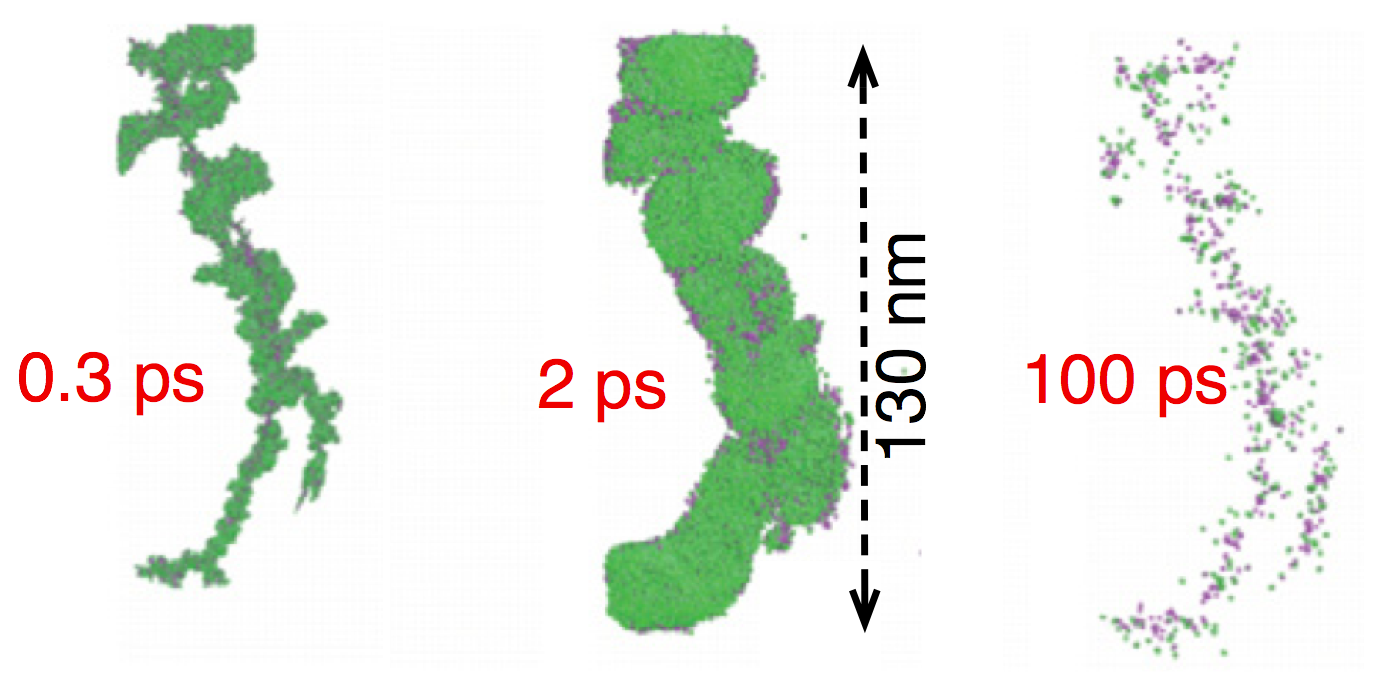Radiation damage on the picosecond timescale
With its obvious importance to the performance and lifetime of machines that operate in radiation rich environments, material damage induced by radiation has been a major research focus for decades. These extremely fast evolving phenomena represent a gap in our understanding of solid-state science, and this gap limits our advancement of practical materials science and engineering.

Molecular dynamics simulations predict that damage forms within 10s-of-nm scale volumes, involving millions of atoms whose structure evolves over picoseconds (see figure above).
A measurement of these dynamics with picosecond time resolution is essential for understanding of the damage mechanism. Until recently, however, such a measurement was impossible, and to date no data exists. The community is now racing to conduct such measurement on large XFEL facilities.
We devised a method to measure for the first time the temporal evolution of radiation damage on a picosecond time scale using a tabletop laser system.
Our concept is to conduct a time-resolved pump-probe measurement of radiation damage in a thin layer composition sample. The sample is chosen for its high variance of reflectivity with target thickness for XUV radiation. We will induce damage by bombarding the sample with photo-fission fragments generated by laser-produced high-energy electrons. The damage formation will be probed using a coherent XUV beam generated by a process known as High Harmonic Generation off Plasma Mirrors.